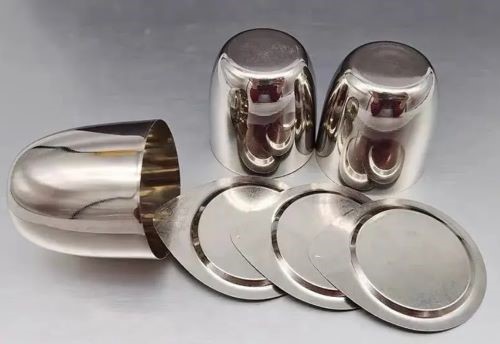The Versatility Of Platinum Crucibles: Advantages And Applications
Introduction
Platinum Crucible features defined properties that make it suitable for handling high-temperature and corrosive substances in scientific and industrial processes. In this article, we examine the versatility of platinum crucibles, their applications in different industries and the measurable benefits they provide.

Figure 1. Platinum Crucible
Understanding Platinum Crucibles
Platinum crucibles are manufactured from platinum. Platinum has a melting point of 1 768 °C. It conducts heat evenly and resists corrosion and chemical reactions. These properties offer reliable performance in controlled experiments.
Advantages of Platinum Crucibles
The key features of platinum crucibles are as follows:
High Melting Point: Platinum maintains a melting point of 1 768 °C, which permits use in processes that require temperatures above 1 000 °C. This ensures that the crucibles preserve their form.
Chemical Inertness: Platinum does not react with most acids or bases. This resistance to corrosion minimises the chance of sample contamination.
Thermal Conductivity: Platinum exhibits effective thermal conductivity. This facilitates uniform heating and cooling during experimental procedures.
Non-toxic and Biocompatible: Platinum is non-toxic and biocompatible. It meets the criteria for usage in medical and pharmaceutical applications such as sample preparation and inorganic material synthesis.
High Purity: Crucibles are typically produced from high purity platinum to limit contamination. High purity platinum crucibles are available from Stanford Advanced Materials (SAM).
Applications of Platinum Crucibles
The properties of platinum crucibles allow them to be deployed in various sectors.
1. High-temperature Applications
Platinum crucibles are used in processes such as melting, annealing and calcination. Industries such as metallurgy, glass production and ceramics use them to manage materials at elevated temperatures.
2. Analytical Chemistry
Platinum crucibles are employed in gravimetric analysis and in melting methods. Their high thermal conductivity, chemical inertness and capability for precise mass measurement yield reproducible results.
3. Handling of Precious Metals
Platinum crucibles serve in precious metal refining, jewellery production and catalyst manufacturing. They are applied when processing gold, silver, platinum and palladium, thereby limiting contamination and material loss.
4. Semiconductor Industry
The semiconductor industry requires high purity materials and strictly controlled processes. Platinum crucibles are used in the production of semiconductors and electronic components, thereby providing a controlled environment for crystal growth, thin-film deposition and high-temperature annealing.
5. Research and Development:
Platinum crucibles are used in research and development to evaluate and test advanced materials. Their reliability and chemical inertness support the acquisition of precise measurements and analyses.
Optimal Usage Considerations
Careful handling of platinum crucibles is required to avoid damage or contamination. The crucibles should be cleaned before each use to ensure sample integrity. Storing them in a clean, dry environment preserves their condition and prevents oxidation.
Further reading: Maintenance of Platinum Crucibles
Conclusion
In summary, platinum crucibles have multiple applications in various industries. Their high temperature resistance, chemical inertness and controlled performance support their use in laboratory procedures, precious metal handling, analytical chemistry and semiconductor production. For further information, please visit our Homepage.

 Bars
Bars
 Beads & Spheres
Beads & Spheres
 Bolts & Nuts
Bolts & Nuts
 Crucibles
Crucibles
 Discs
Discs
 Fibers & Fabrics
Fibers & Fabrics
 Films
Films
 Flake
Flake
 Foams
Foams
 Foil
Foil
 Granules
Granules
 Honeycombs
Honeycombs
 Ink
Ink
 Laminate
Laminate
 Lumps
Lumps
 Meshes
Meshes
 Metallised Film
Metallised Film
 Plate
Plate
 Powders
Powders
 Rod
Rod
 Sheets
Sheets
 Single Crystals
Single Crystals
 Sputtering Target
Sputtering Target
 Tubes
Tubes
 Washer
Washer
 Wires
Wires
 Converters & Calculators
Converters & Calculators
 Chin Trento
Chin Trento


